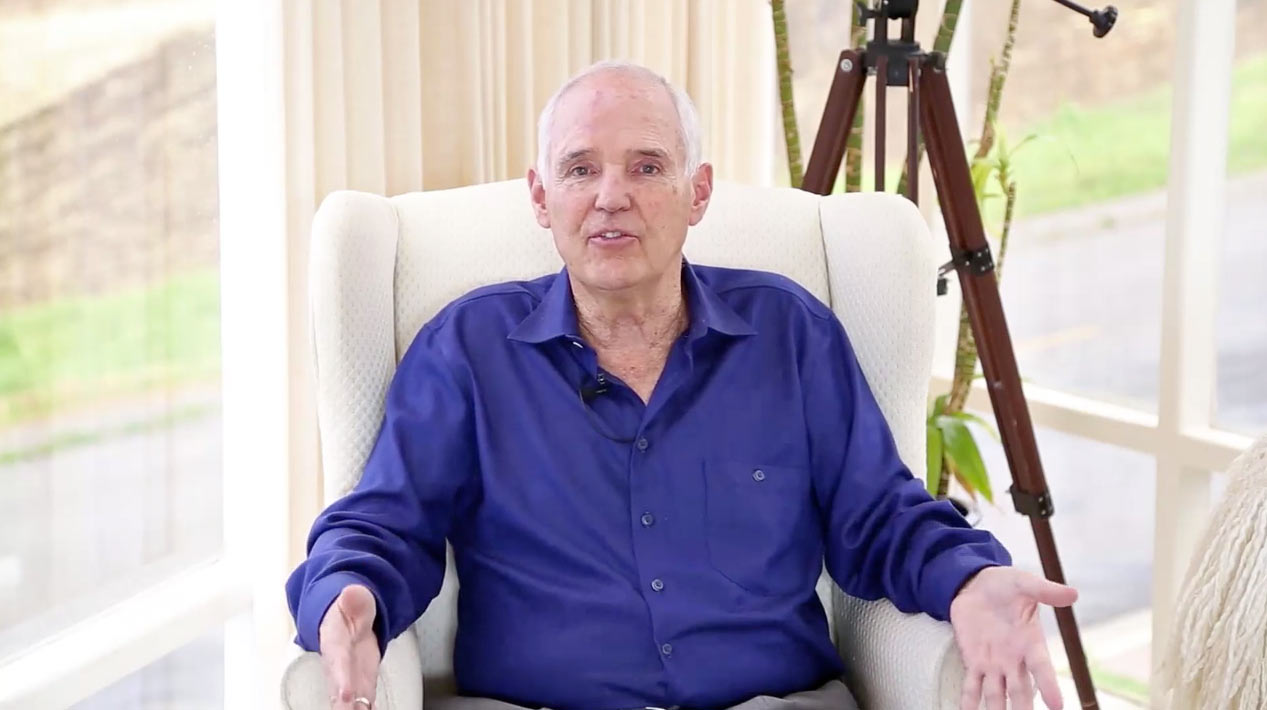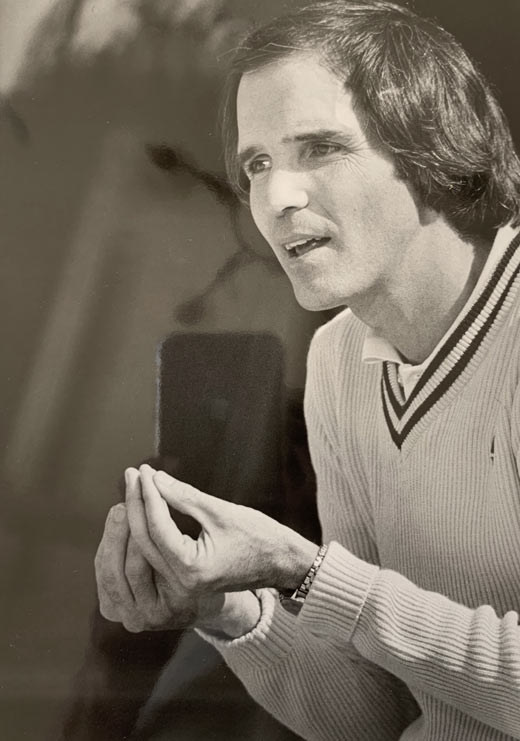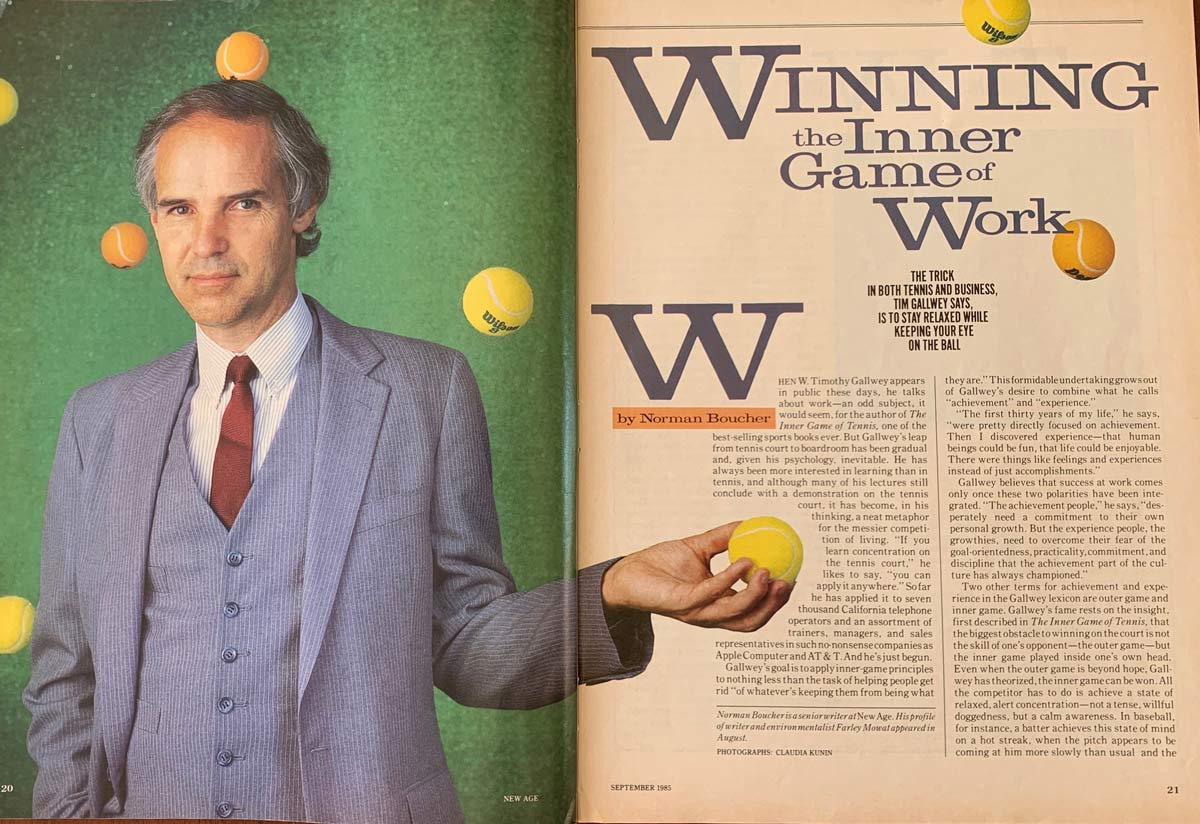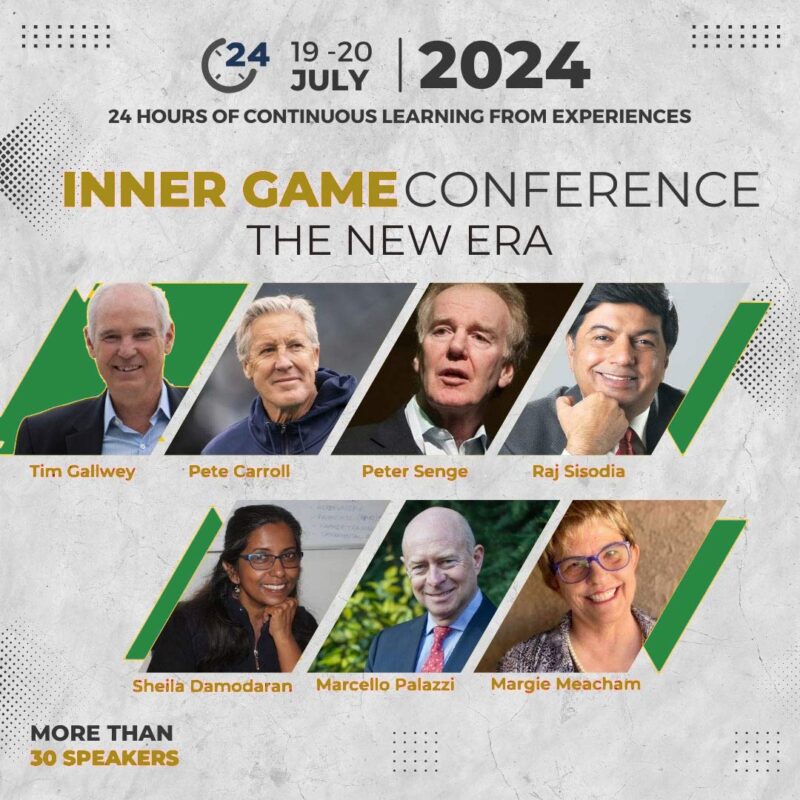A Word From Tim Gallwey
Tim Gallwey introduces The Inner Game
“When we plant a rose seed in the earth, we notice that it is small, but we do not criticize it as ‘rootless and stemless,'”
~ Tim Gallwey
About The Inner Game
For over forty years I have focused my efforts on the importance of what I call The Inner Game. I have learned many things on this journey while all the time in both my personal life and my public work, there has been one overriding passion.
For both individual and for society, there must be a rebalancing of the importance we give to the inner domain, that which takes place within human beings as opposed to all that goes on in external world.
The thoughts, feelings and motivations within us may be invisible, even to ourselves, but have great impact on how we see ourselves. The choices we make and how we see and treat others creates much of the external conditions in which we live.
But what attracts our attention and in what do we invest our goals and efforts, individually and collectively? What is most important to us, our external wealth or internal wealth? Do we care more about winning the outer games we play, overcoming external obstacles to achieve external goals? Or do we invest ourselves in overcoming the internal obstacles that keep us from being happy, enjoying life, experiencing inner peace and fulfillment?
About Tim Gallwey
As a boy, Tim Gallwey was nationally ranked tennis player in his division and later captained his Harvard University team.
On what was meant to be a sabbatical from a career in college administration, Gallwey worked as a tennis instructor in Monterey, CA. Initially, he focused his efforts on giving traditional instructions with mixed results. He soon discovered that if he simply invited his students to focus their awareness on their strokes as they were, technique evolved naturally and seemed to self correct. Players using Gallwey’s methods improved far more rapidly than usual, and without self-criticism or trying so hard to “do it right.” By quieting self-interference, they were more able to tap into their natural abilities with greater ease.
In the years after his first book’s release, readers even began to employ The Inner Game methodology to change the understanding of corporate work. His long term clients included Apple, IBM, AT&T, The Coca Cola Company, and Rolls-Royce where he applied The Inner Game of coaching for Leadership, Sales, Management and Teamwork, Gallwey’s work has often been credited as the foundation of the new fields of corporate and life coaching.
Tim’s current focus is to make Inner Game tools available globally to aid individuals of any age or background in acieving their goals anywhere, anytime.
How has The Inner Game changed corporate culture?
Once upon a time, the Vice President of the largest company in the world took an Inner Game lesson and said: “You’ve found a better way to change.” He hired me to help transform AT&T from an old-school monopoly into a modern competitive enterprise.
Using Inner Game methods, leaders enjoyed creating a new company and a new buyer-centered approach to selling. The technicians became as curious as children, losing their fear of seeming unprofessional, while thousands of telephone operators learned to enjoy and truly benefit from their seemingly routine work. For AT&T, this was a game changer.
SUCCESSFUL COMPANIES USING THE INNER GAME TO EVOLVE

Apple Computer used The Inner Game to develop their revolutionary user-interface design.
IBM taught their managers The Inner Game approach to coaching, joining the many companies who have redefined work as to focus on encouraging learning and enjoyment as well as performance.
Rolls-Royce completed six years of Inner Game training for rising managers, training them to work in teams using heightened awareness of respect, participation, responsibility, and non-judgmental focus on self determined critical variables.
The Inner Game helped launch the professions of life and professional coaching as well as the field of sports psychology through which some of the most successful professional coaches including Pete Carroll and Steve Kerr, have demonstrated uncanny success by emphasizing the human dimension of their sports as an essential part of pursuing excellence.
Leading companies like these and many others have thrived in their attempts to combine the inner element with organizational discipline and know how and thousands of companies have been launched to facilitate these changes. I believe this momentum can only grow. Those that embrace the development of our humanity and combine it with the skills needed to achieve our external goals will continue to learn and thrive. Those who don’t will find it increasingly difficult to get the best people and the best results.
Apple Computer Utilizes
Inner Game Techniques
Leading Apple Designer Alan Kay used Inner Game principles to train interface designers. In this video, Alan Kay shows a film based on The Inner Game of Tennis. The film contrasted the speed at which two students learn to play tennis. The first student was told to “meet the ball at a certain angle at a certain stage of its bounce”; in other words, the full abstract teaching treatment.
The second student was told to “make the ball go over the net.” The first student experienced frustration and a serious case of clumsiness. The second student progressed rapidly and evidently enjoyed himself. Kay naturally tied these concepts to computer interfaces, as this is where his greatest natural ability lies. Listen to his take – see what it sparks in you.
Apple’s Alan Kay on Inner Game principles
A Brief History of The Inner Game
An account by Tim Gallwey
The Discovery
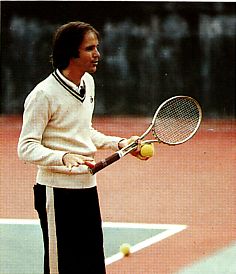 In 1971, while on sabbatical from a career in higher education, I took a job as tennis professional in Seaside, California. While teaching on the court one day, I realized that many of my instructions were being incorporated in the student’s mind as a kind of “command and control” self-dialogue that was significantly interfering with both learning and performance. When I inquired further, I found there was a lot going on in the mind of my tennis students that was preventing true focus of attention.
In 1971, while on sabbatical from a career in higher education, I took a job as tennis professional in Seaside, California. While teaching on the court one day, I realized that many of my instructions were being incorporated in the student’s mind as a kind of “command and control” self-dialogue that was significantly interfering with both learning and performance. When I inquired further, I found there was a lot going on in the mind of my tennis students that was preventing true focus of attention.
I then began to explore ways to focus the mind of the player on direct and non-judgmental observation of ball, body, and racquet in a way that would heighten learning, performance, and enjoyment of the process. With this new awareness, amateur tennis players seemed to naturally develop the instincts and physicality of much more experienced players without specific instruction.
The Tennis Book
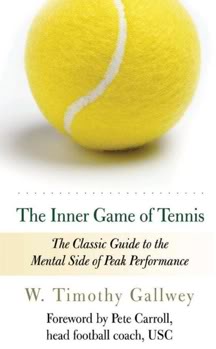 In 1974, initial experiments and their surprising results were published as The Inner Game of Tennis. The book surpassed expectations of both author and publisher by selling over one hundred times more copies than predicted and soon became a New York Times Bestseller.
In 1974, initial experiments and their surprising results were published as The Inner Game of Tennis. The book surpassed expectations of both author and publisher by selling over one hundred times more copies than predicted and soon became a New York Times Bestseller.
Shortly thereafter, KCET produced a six-part nationally viewed TV series called Inner Tennis, each of which focused on a particular theme such as overcoming fear, achieving concentration, breaking bad habits, etc. Inner Skiing applied the same learning techniques to an icier sport and dealt specifically with overcoming the various kinds of fear commonly experienced in that sport.
Golf and Music Books
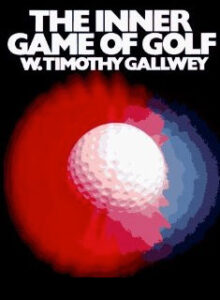 In 1980, Random House asked me to write The Inner Game of Golf and to, in doing so, describe the learning from the point of view of a student of the game, which I was. Perhaps more than in any other major sport, the golfer is vulnerable to subtle shifts in mindset, which can have drastic impact on one’s performance.
In 1980, Random House asked me to write The Inner Game of Golf and to, in doing so, describe the learning from the point of view of a student of the game, which I was. Perhaps more than in any other major sport, the golfer is vulnerable to subtle shifts in mindset, which can have drastic impact on one’s performance.
 About that time Barry Green, then the lead bassist for the Cincinnati Philharmonic Orchestra approached me to collaborate on The Inner Game of Music, another activity in which both the fear of failure and doubt can be anathema to the quality of performance.
About that time Barry Green, then the lead bassist for the Cincinnati Philharmonic Orchestra approached me to collaborate on The Inner Game of Music, another activity in which both the fear of failure and doubt can be anathema to the quality of performance.
Business Culture Evolves
By the end of the seventies, many corporate leaders and managers recognized the implications of Inner Game concepts and began to use them as models for facilitating desired changes in the workplace.
One of my first long-term clients became AT&T. In the early 1980s, they were faced with the challenge of changing the mindset of the largest company in the U.S. from the “bell shaped head” of monopolistic thinking to the mindset of a competitive, market-driven, entrepreneurial company.
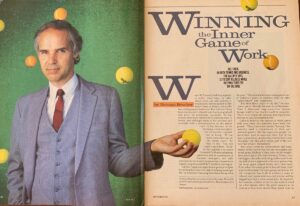
Not long after, I was asked to help IBM to change its prevailing corporate attitude of “we know it all” to that of a learning and coaching organization. Inner Game methods were then put to use in Apple Computer Company’s Leadership Development program.
Top Corps Embrace Inner Game
In the 1990s, Inner Game methods were used to train the top-level managers of The Coca-Cola Company in how to coach their employees, better develop the skills of their work teams, and, eventually, to move towards becoming a learning organization.

Hundreds of keynote addresses were delivered on a wide range of Inner Game applications including Achieving Excellence in Performance, Learning to Learn in an Age of Change, The Inner Games of Management, Leadership and Coaching. It was easy for me to apply the Inner Game principles to any corporate application because the foundation was simple and universal. Often I used tennis, golf, or skiing demonstrations to make visible the dramatic changes that could take place with a different approach to coaching.
Redefining Work and Teams
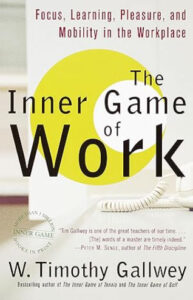 The Inner Game of Work, published in 1999, is an inside look at how the Inner Game methods and models have been applied by many individuals, in a wide variety of companies, over the past twenty years. Mostly, it is focused on the attainment of individual excellence. With the turn of the century, the focus of my own interest had turned towards The Inner Game of Teams.
The Inner Game of Work, published in 1999, is an inside look at how the Inner Game methods and models have been applied by many individuals, in a wide variety of companies, over the past twenty years. Mostly, it is focused on the attainment of individual excellence. With the turn of the century, the focus of my own interest had turned towards The Inner Game of Teams.
The work of overcoming the obstacles faced in people working together effectively is both challenging and fascinating. In the last half of 1999, I helped facilitate over 50 workshops with teams, and joined forces with Dr. Valerio Pascotto to do what I believe is pioneering work in the field of people learning to work effectively together.
The Stress Book and Life University
 In my work with teams and companies, I found that a primary obstacle for most in the pursuit of a goal seemed to be stress. In 2009, I collaborated with two respected physicians, Dr. John Horton and Dr. Ed Hanzelik, to study how stress affects our bodies and minds. We explored how the Inner Game principles could help with not only stress management, but stress reduction and prevention. From this research evolved into The Inner Game of Stress.
In my work with teams and companies, I found that a primary obstacle for most in the pursuit of a goal seemed to be stress. In 2009, I collaborated with two respected physicians, Dr. John Horton and Dr. Ed Hanzelik, to study how stress affects our bodies and minds. We explored how the Inner Game principles could help with not only stress management, but stress reduction and prevention. From this research evolved into The Inner Game of Stress.
After finding such a meaningful cyclical relationship between work and stress, I couldn’t help but yearn for a way to help individuals navigate the quagmire caused  by stress, work, and the desire to meet goals. It seemed one on one coaching was the best way to do this, but it would be impossible to reach everyone who needed help in this way. With the help of Myles Downey, founder of Performance Coaching International, Gary Wessely, and Richard Merrick, we developed an eCoach as a pilot that was designed to aid individuals in meeting their desired goals. This program utilized the Inner Game principles to guide coaches through personalized sessions aimed towards finding and eliminating obstacles, breaking limiting patterns, and making progress toward both long and short-term goals. Since then, this proof of concept has evolved into the soon to be unveiled “Life University” (Life U).
by stress, work, and the desire to meet goals. It seemed one on one coaching was the best way to do this, but it would be impossible to reach everyone who needed help in this way. With the help of Myles Downey, founder of Performance Coaching International, Gary Wessely, and Richard Merrick, we developed an eCoach as a pilot that was designed to aid individuals in meeting their desired goals. This program utilized the Inner Game principles to guide coaches through personalized sessions aimed towards finding and eliminating obstacles, breaking limiting patterns, and making progress toward both long and short-term goals. Since then, this proof of concept has evolved into the soon to be unveiled “Life University” (Life U).
Inner Game Schools
In 2012, The Inner Game International School of Coaching was launched. As of 2017, The Inner Game Schools are now active in Brazil, Italy, Spain, Czech Republic and in the U.S.
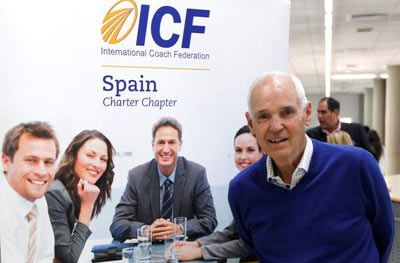
Graduates have moved on to use their newfound skills to learn, coach others through the learning process and revolutionize their lives. From the graduates of these schools come professionals dedicated to the pursuit of learning; both from everyday life experiences and in every coaching session.
International Outreach
Timothy Gallwey has continued to travel the world giving Inner Game seminars to thousands of ernest participants in:
London, England, Moscow, Russia, Kiev, Ukraine, Milan Italy, Barcelona and Madrid, Spain, Paris, France, Los Angeles, California, Orlando, Florida, Mexico City, Mexico, Bogota, Columbia, Lima, Peru, Buenos Aires, Argentina, Santiago Chile, Quito and Guayaquil, Ecuador, Asunción, Paraguay; and in Brazil: São Paulo, Rio de Janeiro, Brasilia, Salvador, Fortaleza, Belo Horizonte, Curitiba and Recife.
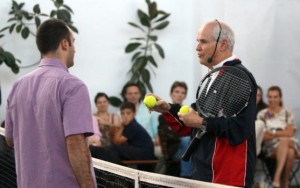
Everywhere Tim has offered The Inner Game, it has been received with deep gratitude and even tears of joy. It is Tim’s hope today that The Inner Game will continue to reach and enrich human beings across the globe far into the future.
50th Anniversary Edition
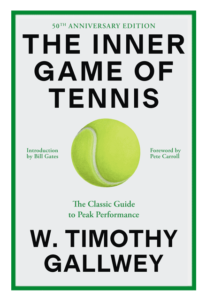 With millions of copies sold, Tim Gallwey’s groundbreaking Inner Game books have influenced the lives of many.
With millions of copies sold, Tim Gallwey’s groundbreaking Inner Game books have influenced the lives of many.
When first published in 1974, The Inner Game of Tennis was a revelation. In 2024 it is even more relevant with our current everyday distractions.
The Inner Game of Tennis
(50th Anniversary Edition)
The Classic Guide
to Peak Performance
The Inner Game - A New Era
We launch The New Era with a huge event! Join us July 19-20, 2024 to discover how The Inner Game is evolving to embrace the massive changes and challenges we face collectively and individually.
Please join us for this amazing live online event! For the first time we will have a 24-hour program including participants from around the world. SIGN UP NOW to watch live according to your time zone.
More than 30 speakers will share with us their life experiences and professional stories of success, based on their understanding of The Inner Game.

